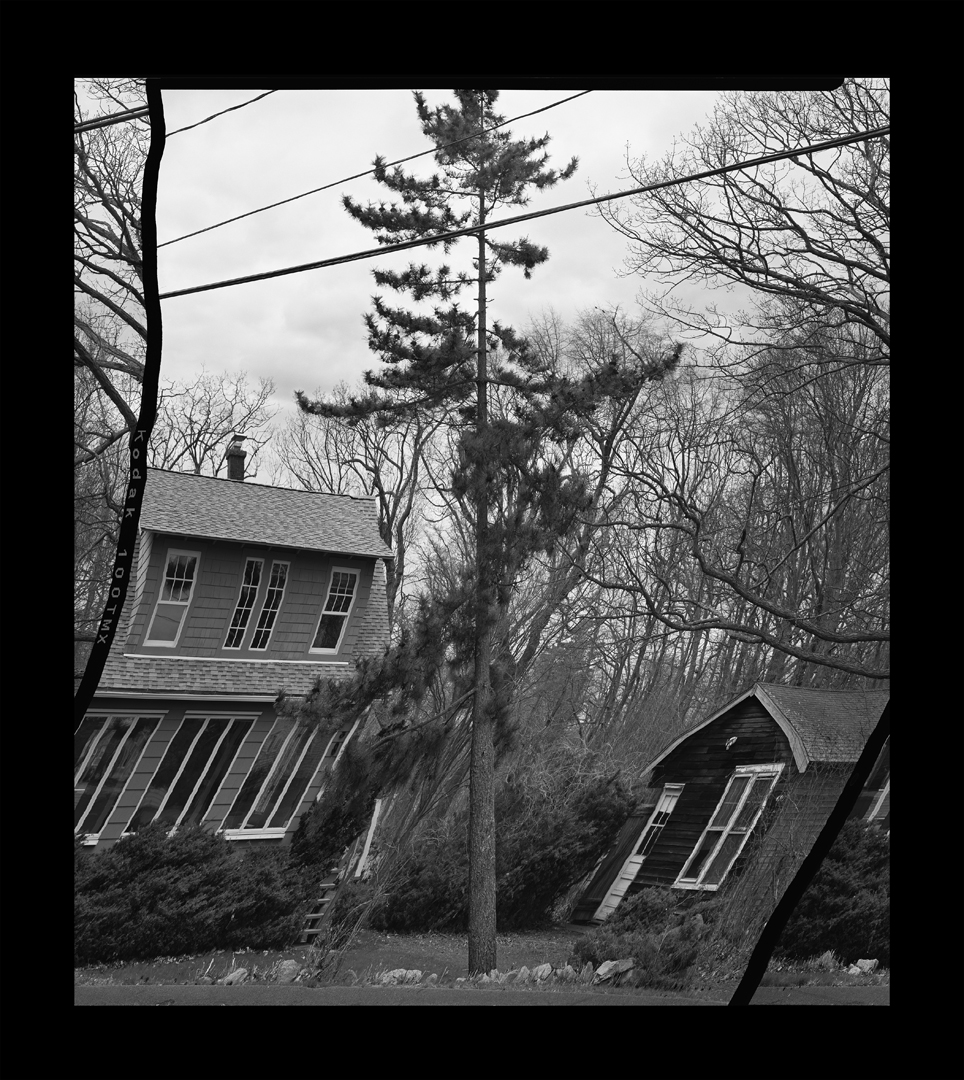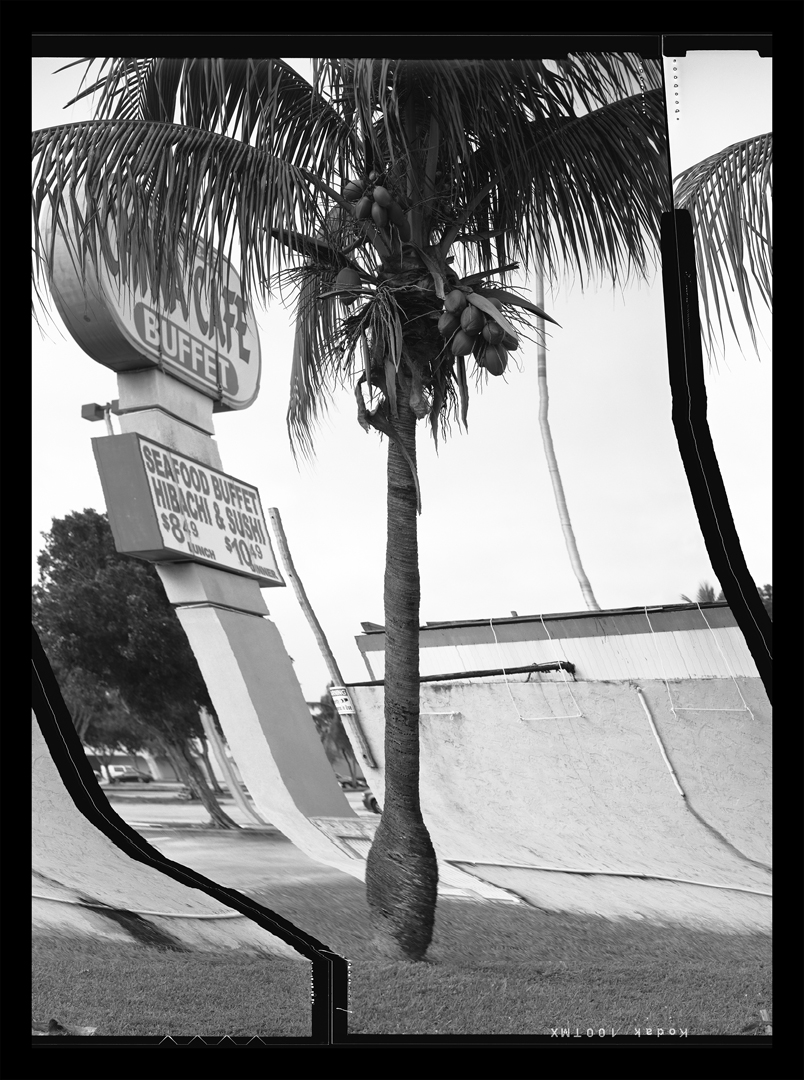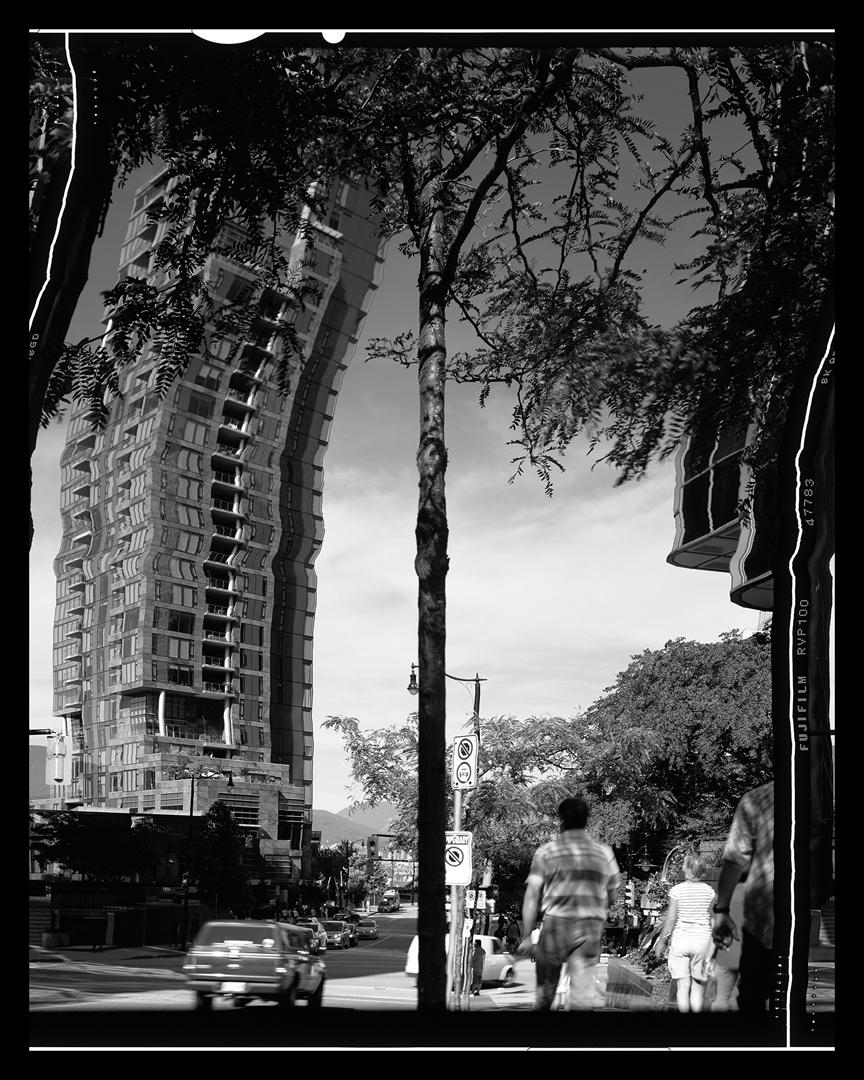Daniel Temkin: Straightened Trees
Artist(s):
Title:
- Straightened Trees
Exhibition:
- SIGGRAPH 2021: Art with an Impact
-
More artworks from SIGGRAPH 2021:


Creation Year:
- 2020
Medium:
- silver gelatin print
Size:
- 431⁄4 × 40 inches
Category:
Artist Statement:
This series features silver gelatin prints of trees shot on large-format film and then straightened with custom code, giving strip malls, telephone poles, and restaurant signs the curves that once belonged to the elms, palms, and oaks they stand beside. It uses media less associated with technology, in part to emphasize algorithmic and human processes rather than technological tools. Using custom code, the natural curvature of each tree is “corrected.” Manufactured objects, i.e., buildings and power lines, twist and contort around the artificially plumbed tree. Each photo is shot on large-format film, the only medium that captures enough detail to straighten the tree without pixelly artifacts. Because the trees need to include human-made objects (such as buildings) straight-on, they are often shot from a car’s point of view. That aspect, plus the fact that all were shot in North America, emphasizes the classic photographic road trip (e.g., Lee Friedlander’s America By Car).
The images begin in the realm of the analog and are often exhibited in an analog form (as silver gelatin prints). However, even if it were possible to straighten a tree in the darkroom, the impulse to do so is a digital one. Computer scientist Joseph Weizenbaum, best known for creating the Eliza chatbot, described the cycle of compulsion of programming: the machine is completely under our control, and yet, again and again, fails to do what we want it to, implicating us, the programmers. This is where coding seems like linguistic magic: we speak an incantation, but we say it wrong and mayhem ensues. Since we can’t really force ourselves to be more logical, we instead become compulsive about the things we can control; this leads to the cliches of programmers arguing over tabs vs. spaces, etc. We’re particular about expressing ourselves to the machine in an organized way as if that clarity will give us control over what the code ultimately does. This compulsiveness is no longer unique to programmers; all of us who use computers extensively think in terms of the machine in order to get it to do what we want.








